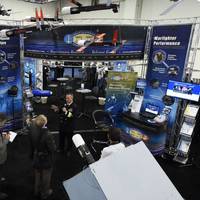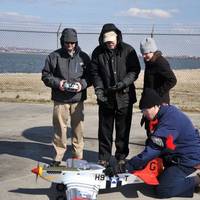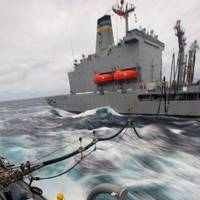Seawater Carbon Capture Process Receives US Patent

The Electrolytic Cation Exchange Module (E-CEM), developed at the U.S. Naval Research Laboratory (NRL), provides the Navy the capability to produce raw materials necessary to develop synthetic fuel stock at sea or in remote locations. The NRL, Material Science and Technology Division, has been granted the first U.S. patent for a method to simultaneously extract carbon dioxide and hydrogen from seawater. This single process provides all the raw materials necessary for the production of synthetic liquid hydrocarbon fuels.
The Midas Touch: US Navy Researchers Convert Seawater into Fuel

Researchers at the Naval Research Laboratory (NRL) say they have developed technology to extract carbon dioxide from seawater while simultaneously producing hydrogen, and then converted the gasses into hydrocarbon liquid fuel. NRL engineers consider the breakthrough to be a potentially revolutionary advancement. Flying a radio-controlled replica of the historic WWII P-51 Mustang red-tail aircraft – of the legendary Tuskegee Airmen – NRL researchers pictured here (l to r) Dr. Jeffrey Baldwin, Dr. Dennis Hardy, Dr. Heather Willauer, and Dr.
Scientists Strive to Make Fuel from Seawater

The U.S. Naval Research Laboratory (NRL) is developing the chemistry for producing jet fuel from renewable resources. Refueling U.S. Navy vessels, at sea and underway, is a costly endeavor in terms of logistics, time, fiscal constraints and threats to national security and sailors at sea. In Fiscal Year 2011, the U.S. Navy Military Sea Lift Command, the primary supplier of fuel and oil to the U.S. Navy fleet, delivered nearly 600 million gallons of fuel to Navy vessels underway, operating 15 fleet replenishment oilers around the globe.







